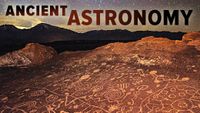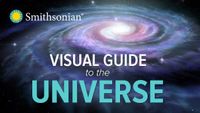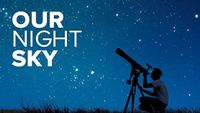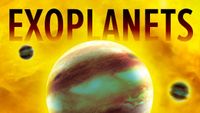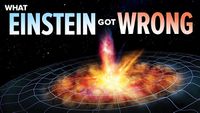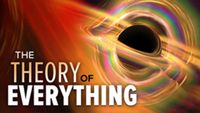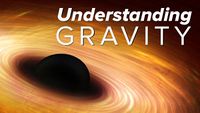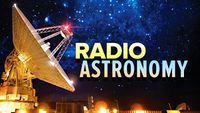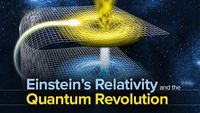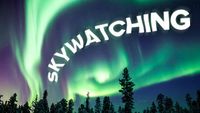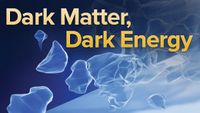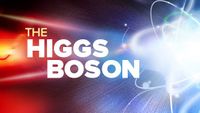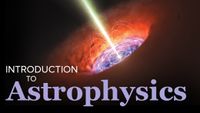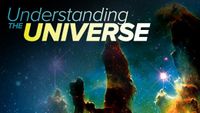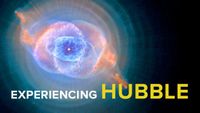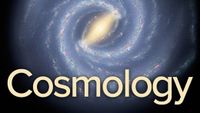The Great Courses: Difference between revisions
No edit summary |
|||
| Line 1: | Line 1: | ||
__NOTITLE__ | |||
As I mentioned on the [[astronomy|main page]] [https://www.thegreatcourses.com The Great Courses] offers several classes, hosted online at their site and at [https://cincinnatilibrary.kanopy.com Kanopy], and the [https://www.cincinnatilibrary.org/ Cincinnati Public Library] also carries many of their classes on DVD. Here are my detailed thoughts. | As I mentioned on the [[astronomy|main page]] [https://www.thegreatcourses.com The Great Courses] offers several classes, hosted online at their site and at [https://cincinnatilibrary.kanopy.com Kanopy], and the [https://www.cincinnatilibrary.org/ Cincinnati Public Library] also carries many of their classes on DVD. Here are my detailed thoughts. | ||
Latest revision as of 09:57, 15 January 2020
As I mentioned on the main page The Great Courses offers several classes, hosted online at their site and at Kanopy, and the Cincinnati Public Library also carries many of their classes on DVD. Here are my detailed thoughts.
The Remarkable Science of Ancient Astronomy 
by Professor Bradley E. Schaefer, Ph.D. - Louisiana State University
The official course description is below. This is a 24 episode TV show style course with a good presenter and good visuals, although I think they move the cameras around too much to try to keep the topic "dynamic". It starts from prehistory, works through StoneHenge and the Greeks, and provides a good historical introduction to astronomy generally, ending at Copernicus and Kepler - as astronomy becomes an established science. Kanopy link to watch, or go to my Episode-by-Episode page.
In a world without artificial lights, the night sky was ablaze with over a thousand stars, whose patterns illustrated stories people had heard since childhood. Thus, ancient people viewed the sky differently than we do. Skywatching was crucial to daily life, since the motions of the heavens served as timekeeper, calendar, compass, and almanac for planning when to plant and harvest. The perfect regularity of celestial cycles was the only guaranteed aspect of life and inspired a wide range of religious and philosophical views, as different cultures struggled to grasp the unseen forces that govern the cosmos.
A Visual Guide to the Universe with the Smithsonian 
by Professor David M. Meyer, Ph.D. - Northwestern University
The official course description is below. This is a 18 episode TV show style course with a good presenter and excellent visuals. It covers all of the recent (since about 1990) robotic space exploration missions, including all of the space telescopes, and what they have taught us. This one I had to buy to watch, and you can find it here. Go to my Episode-by-Episode page for my reviews of the episodes.
For the first time in human history, we can see the full splendor and mystery of the universe, thanks to instruments on scores of planetary probes and observatories that have been launched into space since the 1990s.
Our Night Sky 
Professor Edward M. Murphy. - University of Virginia
The official course description is below. This is a 12 episode TV show style course. I have not yet watched this series, but I plan to and will review it when I do. This show is available from the library on Hoopla here or Kanopy here. Go to my Episode-by-Episode page for my reviews of the episodes.
For thousands of years, the star-filled sky has been a source of wonder, discovery, entertainment, and instruction. Ancient people from nearly every continent and culture wove exciting stories about the mythological figures they saw in the heavens. People also used the sun, moon, and stars for time-keeping and navigation. And careful observers throughout Europe, the Middle East, Asia, and elsewhere kept precise astronomical records, eventually paving the way for the Scientific Revolution and its remarkable discoveries about the nature of the universe.
The Search for Exoplanets: What Astronomers Know
Professor Joshua Winn, Ph.D. - Princeton University
The official course description is below. This is a 24 episode TV show style course. I have not yet watched this series, but I plan to and will review it when I do. This show is available from the library on Kanopy here. Go to my Episode-by-Episode page for my reviews of the episodes.
Half a century ago, television viewers thrilled to the exploits of the original Star Trek series with its mission “to explore strange new worlds.” Today, astronomers are doing exactly that, analyzing the data from advanced telescopes and discovering strange worlds orbiting other stars in our galaxy.
What Einstein Got Wrong
Professor Dan Hooper, Ph.D. - University of Chicago
The official course description is below. This is a 12 episode TV show style course. I have not yet watched this series, but I plan to and will review it when I do. This show is available from the library on Hoopla here. Go to my Episode-by-Episode page for my reviews of the episodes.
'He was the quintessential genius whose brainpower rewrote the laws of the universe. Albert Einstein may have died decades ago, but his immense legacy continues. Who has not heard of Einstein’s theory of relativity, which revolutionized our understanding of space, time, and matter? His other discoveries are themselves titanic achievements that on their own would have made him a famous scientist..
The Theory of Everything: The Quest to Explain All Reality
Professor Don Lincoln, Ph.D. - Fermi National Accelerator Laboratory (Fermilab)
The official course description is below. This is a 24 episode TV show style course. I have not yet watched this series, but I plan to and will review it when I do. This show is available from the library on Kanopy here. Go to my Episode-by-Episode page for my reviews of the episodes.
The great theories of physics are like great works of art. And much like the greatest works of art, you don’t need to completely understand them in order to appreciate them. The unifying theories of physics are among the greatest and most complex in all of science; they stand as incomparable masterpieces in the gallery of modern thought. As you experience them, you will witness their progression toward ever-grander insights, pointing towards an as-yet-unfinished ultimate synthesis that will transform our understanding of the universe. Anyone, no matter what their training in science and mathematics, can appreciate this quest, which is nothing less than a search for the theory of everything.
Black Holes, Tides, and Curved Spacetime
Professor Benjamin Schumacher, Ph.D. - Kenyon College
The official course description is below. This is a 24 episode TV show style course. I have not yet watched this series, but I plan to and will review it when I do. This show is available from the library on Kanopy here. Go to my Episode-by-Episode page for my reviews of the episodes.
The force of gravity rules the universe. It governs our everyday lives on Earth and it controls the motions of the heavens above. Yet it is one of the least understood of all the forces of nature. To endeavor to understand this fundamental force is to experience anew something as simple as getting out of bed, throwing a ball, or diving into a pool; and it gives deep insight into the central organizing principle of the cosmos.
Radio Astronomy: Observing the Invisible Universe
Professor Felix J. Lockman, Ph.D. - Principal Scientist at the Green Bank Observatory
The official course description is below. This is a 24 episode TV show style course. I have not yet watched this series, but I plan to and will review it when I do. This show is available from the library on Kanopy here. Go to my Episode-by-Episode page for my reviews of the episodes.
It’s easy to imagine the first modern humans staring up at the heavens in wonder, their eyes and minds dazzled by a beautiful band of light splashed across the night sky, the ever-changing moon so large and bright, and pinpoints of light in every direction. For a few hundred thousand years, our eyes were our primary astronomical tool, and we used them well. We catalogued and analyzed what we saw, filled in the gaps with powerful stories, applied what we knew of mathematics, and then invented complex tools of stone, metal, and glass to expand our knowledge. Everything we knew about the universe was based on light, that small part of the electromagnetic spectrum detectable by human eyes.
Einstein's Relativity and the Quantum Revolution: Modern Physics for Non-Scientists, 2nd Edition
Professor Richard Wolfson, Ph.D. - Middlebury College
The official course description is below. This is a 24 episode TV show style course. I have not yet watched this series, but I plan to and will review it when I do. This show is available from the library on Kanopy here. Go to my Episode-by-Episode page for my reviews of the episodes.
"It doesn't take an Einstein to understand modern physics," says Professor Richard Wolfson at the outset of this course on what may be the most important subject in the universe.
Skywatching: Seeing and Understanding Cosmic Wonders
Professor Alex Filippenko, Ph.D. - University of California, Berkeley
The official course description is below. This is a 12 episode TV show style course. I have not yet watched this series, but I plan to and will review it when I do. This show is available from the library on Kanopy here. Go to my Episode-by-Episode page for my reviews of the episodes.
Step outside at any time of day or night, look up, and you're bound to see a world filled with limitless wonders: majestic rainbows, dramatic cloud formations, stirring sunsets, intricate constellations, captivating solar eclipses, and even the distant planets themselves. But these and other breathtaking natural phenomena are more than just pretty objects to be admired. Rather, they're the result of fascinating atmospheric and astronomical processes that describe right in front of you important concepts in scientific fields such as
Dark Matter, Dark Energy: The Dark Side of the Universe
Professor Sean Carroll,, Ph.D. - Middlebury College
The official course description is below. This is a 24 episode TV show style course. I have not yet watched this series, but I plan to and will review it when I do. This show is available from the library on Kanopy here. Go to my Episode-by-Episode page for my reviews of the episodes.
There's more to the universe than meets the eye—a lot more. In recent years, scientists have discovered that 95% of the contents of the cosmos are invisible to our current methods of direct detection. Yet something is holding galaxies and galaxy clusters together, and something else is causing space to fly apart.
The Higgs Boson and Beyond
Professor Sean Carroll. - California Institute of Technology
The official course description is below. This is a 12 episode TV show style course. I have not yet watched this series, but I plan to and will review it when I do. This show is available from the library on Hoopla here. Go to my Episode-by-Episode page for my reviews of the episodes.
The search for, and ultimate discovery of, the Higgs boson is a triumph of modern physics—a global, half-century effort whose outcome would make or break the vaunted Standard Model of particle physics. The hunt for the Higgs was the subject of wide media attention due to the cost of the project, the complexity of the experiment, and the importance of its result. And, when it was announced with great fanfare in 2012 that physicists succeeded in creating and identifying this all-important new particle, the discovery was justly celebrated around the world.
Introduction to Astrophysics
Professor Joshua Winn, Ph.D. - Princeton University
The official course description is below. This is a 24 episode TV show style course. I have not yet watched this series, but I plan to and will review it when I do. This show is available from the library on Kanopy here. Go to my Episode-by-Episode page for my reviews of the episodes.
Everyone loves to observe the beauty of the star-studded night sky, to say nothing of the dazzling images from the Hubble Space Telescope. But how many of us truly understand how stars shine, where Saturn’s rings come from, or why galaxies have their distinctive shapes? Observational astronomy excels at imaging and cataloging celestial objects, but it takes a more rigorous discipline to come up with physical explanations for them. That field is astrophysics.
Understanding the Universe: An Introduction to Astronomy, 2nd Edition
Professor Alex Filippenko, Ph.D. - University of California, Berkeley
The official course description is below. This is a 96 episode TV show style course. I have not yet watched this series, but I plan to and will review it when I do. This show is available from the library on Kanopy here. Go to my Episode-by-Episode page for my reviews of the episodes.
This visually rich course is designed to provide a nontechnical description of modern astronomy, including the structure and evolution of planets, stars, galaxies, and the Universe as a whole. It includes almost all of the material in my first two astronomy courses for The Teaching Company, produced in 1998 and 2003, but with a large number of new images, diagrams, and animations. The discoveries reported in the 2003 course are integrated throughout these new lectures, and more recent findings (through mid-2006) are included, as well. Much has happened in astronomy during the past few years; we will discuss the most exciting and important advances.
Experiencing Hubble: Understanding the Greatest Images of the Universe
Professor David M. Meyer, Ph.D. - Northwestern University
The official course description is below. This is a 12 episode TV show style course. I have not yet watched this series, but I plan to and will review it when I do. This show is available from the library on Hoopla here. Go to my Episode-by-Episode page for my reviews of the episodes.
A few hundred miles above Earth, there is a remarkable telescope with a crystal-clear view across the universe. For two decades, the Hubble Space Telescope has been amassing discoveries that rival those of history's greatest scientists and explorers, making it the most important and productive scientific instrument ever built.
Cosmology: The History and Nature of Our Universe
Professor Mark Whittle, Ph.D. - University of Virginia
The official course description is below. This is a 36 episode TV show style course. I have not yet watched this series, but I plan to and will review it when I do. This show is note available from the library or on online sourses. Go to my Episode-by-Episode page for my reviews of the episodes.
Evidence for the birth of the universe is raining down on you. It's called the cosmic microwave background, and it's had quite a journey. Born in the stupendous annihilation of matter and antimatter seconds after the big bang, trapped in the hot plasma of the expanding universe for 380,000 years, and then suddenly released when the universe cooled to the point that atoms could form, this echo of creation has been on an uninterrupted voyage through space for 13.7 billion years—until it reached you. The cosmic microwave background is just one of the many clues about the history and nature of our universe that make the science of cosmology a wondrous, fascinating, and philosophically profound field of study.
